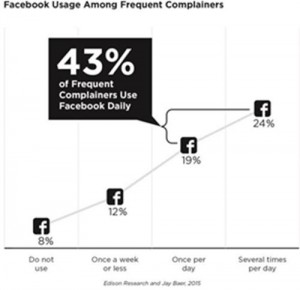
The meta description is a ~160 character snippet, a tag in HTML, that summarizes a page’s content. Search engines show the meta description in search results mostly when the searched for phrase is contained in the description. Optimizing the meta description is a very important aspect of on-page SEO.
What Does a Meta Description Do?
The meta description is an HTML tag, which looks like this in the HTML:
<meta name=”description” content=”A page’s description, usually one or two sentences.”/>
The function of a meta description for your page is simple: its main purpose is to get the visitor from Google to click your link. In other words, meta descriptions are there to generate clickthroughs from search engines.
Search engines say there is no direct ranking benefit from the meta description – they don’t use it in their ranking algorithm. There is an indirect benefit, though: Google uses click-through-rate (CTR) as a way of determining whether you’re a good result. If more people click your result then they’d expect based on your position, they move you up. This is why optimizing the meta description is so important, as is optimizing your titles.
Characteristics of a Good Meta Description
I think every article on meta descriptions will tell you some of these, but I combined all that made sense to me and came up with this list.
- It should be around 135 to 160 characters.
There is no ‘this number is right’ in this. It depends on what Google adds to your search result and how much they want to show. Google might, for instance, add the date to an article, and that will reduce the number of characters. Bearing that in mind, the rule of thumb is that 135 characters is usually fine. Lately, we have even seen meta descriptions that contain over 250 characters.
- It should be actionable, in an active voice.
Of course it should. If you consider the meta description the invitation to the page, you can’t just make it “A mixed metaphor describing a non-existent, yet implicitly high level of qualification.” That’s a dull description. I’ll explain using some examples later.
- It should include a call-to-action.
“Hello, we have such and such new product, and you want it. Find out more!” This overlaps the active voice, but I wanted to emphasize it. It’s your sales text, where your product is the page that is linked, not the product on that page. Invitations like Learn more, Get it now, Try for free come to mind.
- It could contain structured content.
If you have a product for the tech-savvy, focusing on technical specs of the product could be a good idea. Manufacturer, SKU, price, things like that. If the visitor is specifically looking for that product, chances are you don’t have to convince him. Things like a price will trigger the click. Note that you could, of course, use rich snippets for this as well.
- It should match the content.
This is important. Google will find the meta descriptions that trick the visitor into clicking. It might even penalize the site that created the meta description. Next to that, it will probably increase bounce rate and is a bad idea just for that. You want the meta description to match the content on the page.
- It should contain the focus keyword.
If the search keyword matches text in the meta description, Google will be more inclined to use that meta description and highlight it in the search results. That will make the link more related already.
- The meta description should be unique.
If your meta description is a duplicate, the user experience in Google will be less. Although page titles might vary, all pages seem the same as all descriptions are equal. If you intentionally want / need / are enticed to create a duplicate meta description, you’d better leave the description empty and have Google pick a snippet from the page containing the keyword used in a search. Visit Google Webmaster Tools > HTML Improvements or use Screaming Frog SEO Spider to check for duplicate meta descriptions.
Examples of a Good Meta Description
In the preparation for this post, I have checked some of the various articles that mention meta descriptions. I found a lot of wisdom, but almost no examples. I think actual examples will make it easier for you to construct a proper meta description for yourself. Taking the six bullet points above into account, let’s go over some examples.
The Right Length

Personally, I like my meta descriptions like this. Dated and two lines of text.
Over 250 Characters

Note that the actual meta description inserted in that page was only 76 characters and Google probably decided not to use it for that reason.
In an Active Voice

Including a Call-to-Action

There’s two, actually. ‘Learn more now’ and the site link ‘Buy Now $ 399.00’. Both entice that click.
Including Structured Content

8 MP Camera, that’s what I wanted to know. I don’t need that sales text here; I just want that phone.
Containing the Focus Keyword

And variations. Note that Google highlights Academy Awards as well when searching for Oscars. This will make your search result stand out even more.
Where to Start, I Have so Many Pages?
Feel like changing all the meta descriptions after reading this? That might be a burden, with all the pages you have. And where would you find the time for that? Google actually answers this:
If you don’t have time to create a description for every single page, try to prioritize your content: At the very least, create a description for the critical URLs like your home page and popular pages.
Simply take it from there. And be sure to optimize all new meta descriptions from now on.
Troubleshooting Meta Descriptions
I’m sure you can come up with more, but I came up with two main issues:
- My meta description isn’t showing.
Google probably made something up for you, as they feel the meta description you created isn’t representing the content of the page, or is duplicate, for instance. Another issue might be that Google prefers the DMOZ description of your site/page. Simply add<meta name=”robots” content=”NOODP”>to your<head>section. Or check the option in Yoast SEO > Titles & Metas, of course.
- I want to use another description for social sharing.
Do you have Yoast SEO? In that case: check the social tab in the box on Edit Pages. In Yoast SEO Premium, you even have social previews! If not, add OpenGraph tags or Twitter Cards to your website and use any description you want.
Image Credits
Featured Image: JuralMin/Pixabay.com
All screenshots by Michiel Heijmans. Taken August 2016.
(82)








